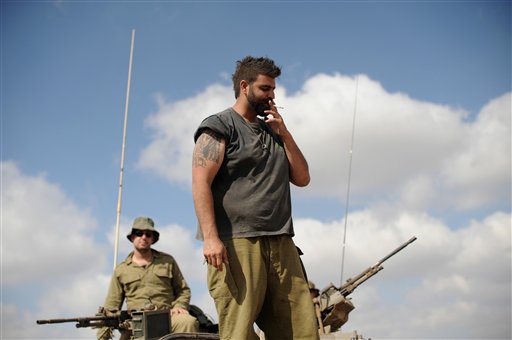Jerusalem—In a weekend of fierce fighting in the Gaza Strip, the Israeli military command shifted its principal objective from suppression of Hamas’ rockets to the discovery and destruction of an extensive system of tunnels that could be used for incursions into Israel.
Hamas spokesmen reported 60 dead and 200 wounded—half of them civilians—in the single neighborhood of Shejaiya, a mile from the border with Israel. The Israeli army had urged residents beforehand to evacuate their homes before the attack but Hamas officials warned residents not to leave, saying that Israel would not attack if they remained.
Israel repeated its warning in leaflets, in broadcasts in Arabic, and direct calls to homes. Israeli officials said the neighborhood is riddled with rocket launch sites and tunnel entrances.
Shejaiya was subject to heavy bombardment during the night, preceding a ground assault in the morning. When the extent of Palestinian casualties became apparent, Israel agreed to a call by Red Cross for a two-hour pause so that casualties could be removed.
Israeli troops also suffered substantial casualties. In addition to five soldiers killed since the operation began Thursday night, 60 were wounded. Seven remain in serious condition.
Among the moderately wounded is an Israeli brigade commander who is a Druze, a sect often described as an offshoot of Islam. Thirteen soldiers in his brigade were killed today.
Israel announced that it would open a field hospital at the Erez crossing point into Gaza to treat wounded Palestinians, both civilians and fighters, who are brought there.
Israeli officers acknowledged that Hamas is putting up a strong fight. An Israeli scholar who has studied the organization since its founding, Dr. Reuven Paz, said that in the current fighting its leadership is gripped in euphoria and even with an apocalyptic vision fed by religious beliefs: "They believe they’re winning."
Several incursions into Israel in recent days by Hamas "special forces" coming through tunnels dug beneath the border fence has strengthened Israel’s conviction that its main strategic target now is not Hamas’ rockets, which have been largely neutralized by the Iron Dome anti-rocket defense system, but the extensive tunnel network leading to the Israeli border.
The apparent object of the heavily armed raiders entering Israel through the tunnels was to inflict casualties and take prisoners back into Gaza in order to exchange them for Palestinian prisoners, as was done with captured Israeli soldier Gilad Shalit. Handcuffs for prisoners were left behind by some of the raiders.
In one instance, the Hamas fighters wore Israeli army uniforms, which may have permitted their presence to go unnoted while they set up an ambush. The tunnels also open the possibility for infiltrating suicide bombers and other terrorists who could continue on to Israel’s heartland. Israeli officials say that at least two weeks would be needed to destroy the tunnels uncovered so far.
Thus far, 14 attack tunnels reaching into Israel have been discovered. Officers say this might only be "the tip of the iceberg." Some of the tunnels go under the border and others stop just short of the border. The tunnels have concrete walls, ventilation, and lighting; most are more than 60 feet deep. Israeli officials said technology does not yet exist that would enable tunnels at that depth to be picked up by sensors.
As Hamas continued today to fire its rockets into Israel at a slightly diminished pace—about 80 a day instead of more than a hundred—the Israeli units inside Gaza are devoting their main efforts to discovering and demolishing the vast tunnel network. Meanwhile, Hamas fighters emerge periodically from internal tunnel systems in attempts to surprise the Israeli troops.
